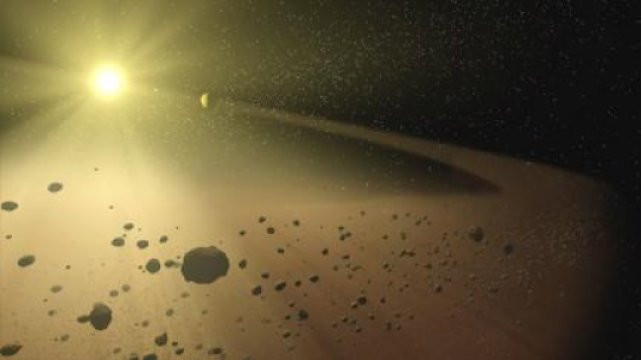Nasa studying nuclear explosions to blast Earth-threatening asteroids

In a demonstration of fact borrowing from fiction, Nasa and the US National Nuclear Security Administration are studying the possibility of destroying Earth-threatening asteroids using nuclear weapons.
Using a combination of an intercept vehicle and a suicide bomber craft, the plan consists of first creating a crater on the rock and then within seconds ramming into it with nuclear explosives.
All this will happen in deep space, apparently far away from the planet.
The two organisations have run supercomputer simulations to see if such a nuclear blast could nudge a large asteroid off course, writes the New York Times.
However, the plan would not work on all asteroid sizes and would be best for on medium-sized asteroids and comets between 164 and 492 feet in diameter.
Not all agree to this nuclear explosion in the skies, arguing that the resulting smaller debris could spell more damage. Deflecting the asteroid would be a better option, they say.
As part of testing spaceflight capabilities, Nasa's Asteroid Redirect Mission (ARM) plans to capture an asteroid and redirect it into an orbit around the moon. The first space crews will then visit the asteroid. The mission is slated for the next decade.
Possible impacts
The possibilities of an Armageddon-style collision are high with nearly 1,000 potentially hazardous asteroids detected which periodically cross the Earth's orbit.
Nasa is currently tracking some of these to predict their future paths but the existing asteroid detection systems can only track 1% of the estimated objects that orbit the sun.
Near-Earth objects bombard the planet daily with around 100 tonnes of rock and dust vaporising high up in the atmosphere. While the smaller ones burn, those bigger than 100 metres reach the Earth. This can happen as frequently as every 30-40 years.
In 2013, a 7,000-tonne meteoroid, 18-metre wide exploded in the skies above the city of Chelyabinsk, Russia, with the force of 30 atomic bombs, blowing out windows, destroying buildings and injuring 1,000 people with a rain of debris.
More recently, last March, a bus-sized asteroid, named 2014 EC, came within 61,637km of Earth.
© Copyright IBTimes 2025. All rights reserved.





















